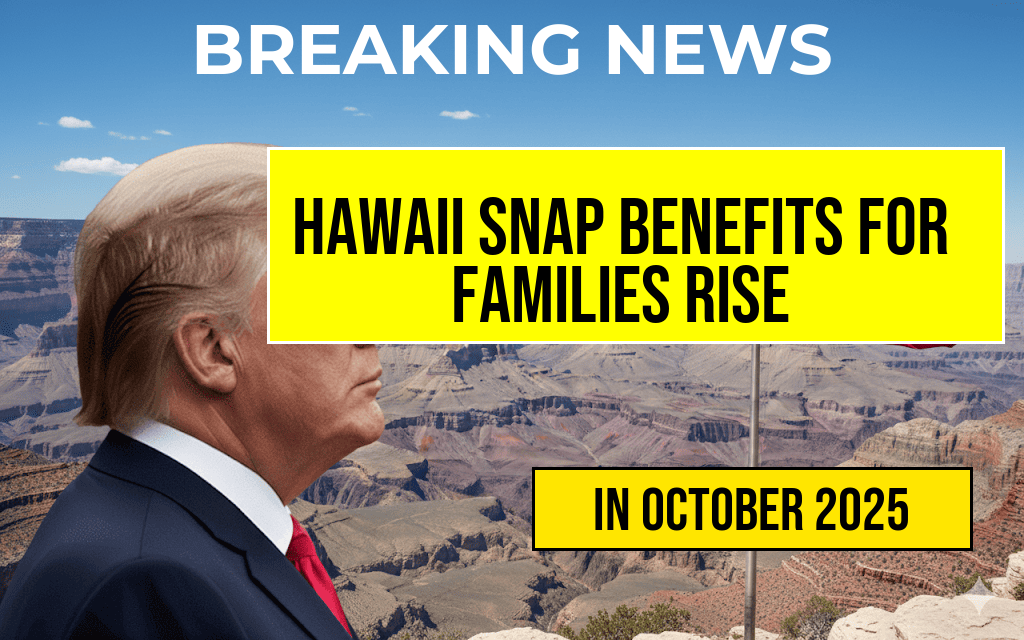Alaska’s Supplemental Nutrition Assistance Program (SNAP) benefits have reached a staggering maximum of $2,853 per month for a family of six, prompting discussions about food security and economic disparities across the United States. In contrast, families in the contiguous U.S. receive a maximum of just $1,421 for the same household size. This stark difference highlights the unique cost of living challenges faced by Alaskan residents, driven by geographic isolation, higher transportation costs, and a more expensive food supply chain. As policymakers and advocates for low-income families assess these disparities, understanding the reasons behind Alaska’s higher SNAP benefits becomes crucial for addressing food insecurity and ensuring equitable support across all states.
The Disparities in SNAP Benefits
SNAP, a federal program aimed at alleviating hunger, varies significantly in its benefit amounts depending on the state. This variation is influenced by several factors, including the cost of living, local economic conditions, and state-specific policies. In Alaska, the high cost of living, particularly in rural areas, necessitates a larger SNAP allocation to ensure families can afford basic necessities.
Understanding Alaska’s Cost of Living
- Geographic Isolation: Many Alaskan communities are remote and not accessible by road, leading to increased shipping costs for food and supplies.
- Transportation Costs: The state’s vast size and harsh weather conditions can make transportation expensive and unreliable, further driving up food prices.
- Limited Access to Fresh Produce: Many areas rely on shipped goods, which can lead to inflated prices for fresh fruits and vegetables, making it difficult for families to maintain a healthy diet.
Comparative Analysis of SNAP Benefits
The following table illustrates the differences in SNAP benefits for a family of six between Alaska and the Lower 48 states:
| Location | Monthly SNAP Benefit |
|---|---|
| Alaska | $2,853 |
| Lower 48 States | $1,421 |
Implications for Food Security
The significant gap in SNAP benefits raises important questions about food security for families in both Alaska and the Lower 48. While the higher benefits in Alaska aim to counteract the unique challenges faced by its residents, they also highlight the struggles of families in other states who may not have sufficient resources to cover their basic nutritional needs.
Food Insecurity Nationwide
According to the U.S. Department of Agriculture, food insecurity affects millions of American households, with varying degrees of severity. Nationally, the average food insecurity rate hovers around 10.5%, but this figure can be markedly higher in states with limited economic opportunities and high living costs. In Alaska, food insecurity rates can reach troubling levels, prompting community organizations to advocate for enhanced support systems to address these challenges.
Community Responses and Resources
Local food banks and nonprofit organizations play a crucial role in alleviating food insecurity across Alaska. Initiatives include:
- Food distribution programs aimed at reaching underserved communities.
- Nutrition education efforts to help families make healthy choices on a budget.
- Collaboration with local farmers to increase access to fresh produce.
For more information on SNAP and food security initiatives, you can visit the USDA SNAP website or check out resources from Feeding America.
Future Considerations
As discussions continue around SNAP benefits and food security, Alaska’s situation serves as a critical case study in understanding the broader implications of economic disparity. Lawmakers must consider the unique challenges faced by residents in different regions and work towards policies that provide equitable support to all families, regardless of their location. Adjustments to SNAP benefits may be necessary, not only for Alaska but for low-income families nationwide, as the fight against hunger and food insecurity persists.
Frequently Asked Questions
What is the maximum amount of SNAP benefits for a household of six in Alaska?
The maximum amount of SNAP benefits for a household of six in Alaska is $2,853.
How do SNAP benefits in Alaska compare to those in the Lower 48 states?
In the Lower 48 states, the maximum SNAP benefits for a household of six is $1,421, which is significantly lower than Alaska’s maximum.
What factors contribute to the higher SNAP benefits in Alaska?
The higher SNAP benefits in Alaska are influenced by the state’s cost of living, including factors like food prices and geographic isolation.
Why do some believe that $1,421 is insufficient for families in the Lower 48?
Many argue that $1,421 is insufficient for families in the Lower 48 due to the rising costs of food and other essential living expenses.
Are there any specific challenges faced by families relying on SNAP in Alaska?
Families relying on SNAP in Alaska face unique challenges, including limited access to fresh food and higher transportation costs, making it vital to have higher benefit amounts.






